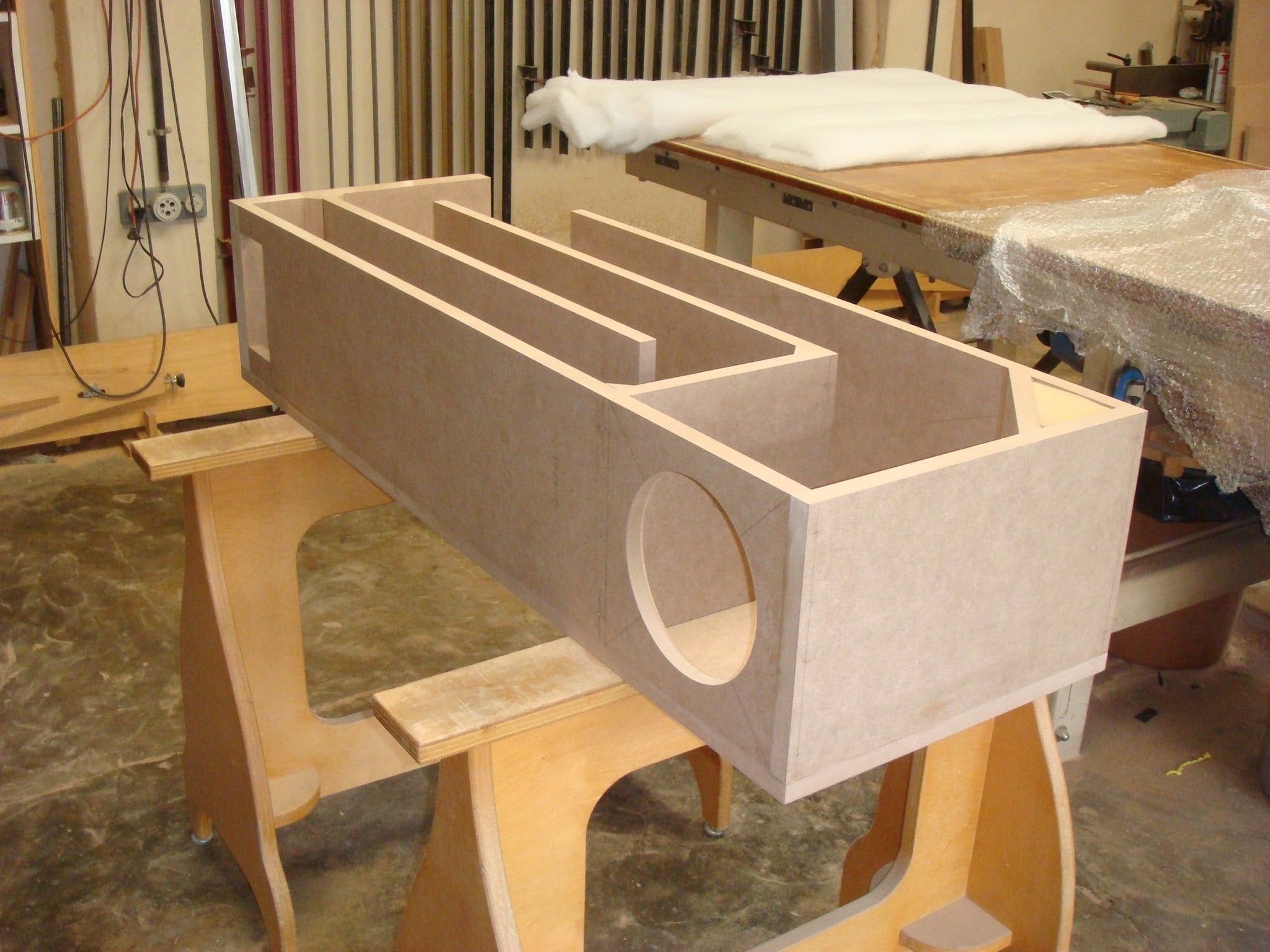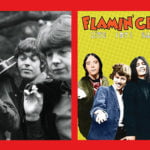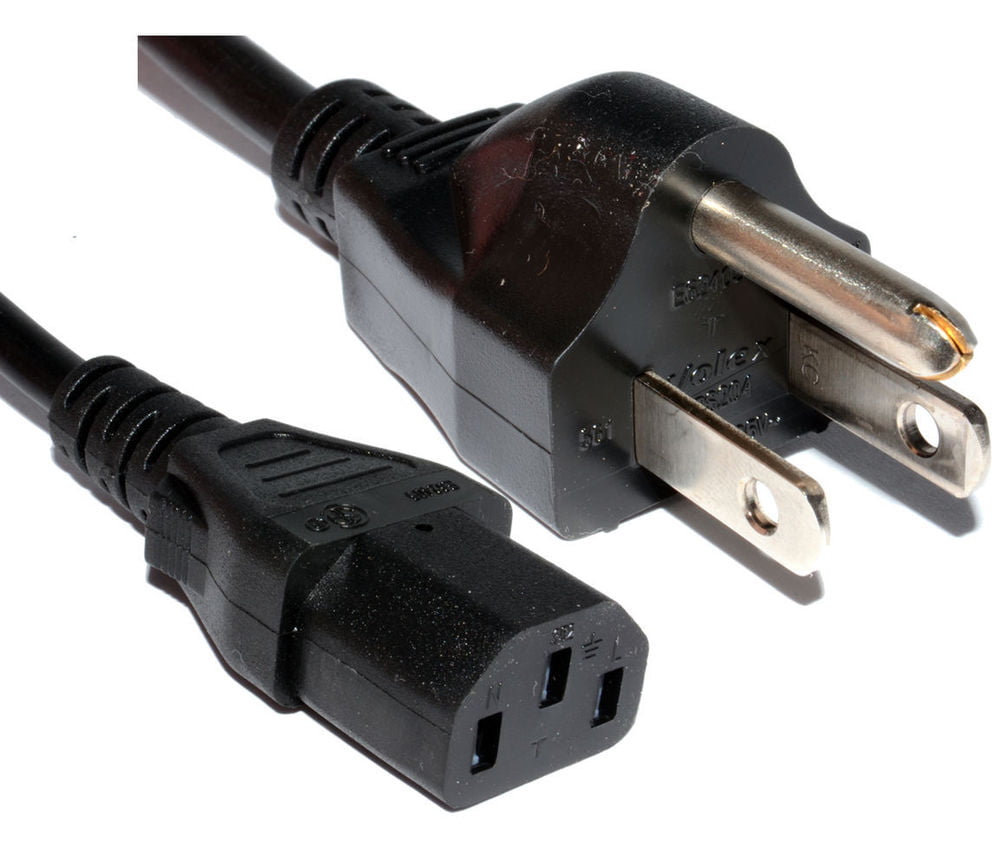It’s the time of year for saving money!
In the last installment of this continuing series, I wrote about transmission-line (“TL”) speaker enclosures, and said that there are at least two different kinds of them; some that are reminiscent of a bass-reflex enclosure in their operation, and others that are more similar to a “restricted port” enclosure.
 The first appears to work like a bass-reflex enclosure because both use the back wave coming off the driver’s diaphragm to reinforce the wave coming off its front, but in fact, it’s really quite different: In the bass-reflex enclosure, the back wave off the driver is used to create one or more resonant artifacts within the box and its port(s). These may, depending on the enclosure’s specific design, be of the same frequency or of different frequencies than the actual back wave off the driver, and it is an out-of-phase component of them – not the original back wave – that appears at the port(s) to reinforce the pressure wave off the front of the driver. In the transmission line, it is the back wave, itself, that is flipped in phase and added to the front wave to extend the speaker’s bass response or to make it louder. In this kind of TL enclosure, the vent of the transmission line duct (the equivalent of the port or ports of the bass-reflex enclosure), is always open to the surrounding air so it can perform its additive function.
The first appears to work like a bass-reflex enclosure because both use the back wave coming off the driver’s diaphragm to reinforce the wave coming off its front, but in fact, it’s really quite different: In the bass-reflex enclosure, the back wave off the driver is used to create one or more resonant artifacts within the box and its port(s). These may, depending on the enclosure’s specific design, be of the same frequency or of different frequencies than the actual back wave off the driver, and it is an out-of-phase component of them – not the original back wave – that appears at the port(s) to reinforce the pressure wave off the front of the driver. In the transmission line, it is the back wave, itself, that is flipped in phase and added to the front wave to extend the speaker’s bass response or to make it louder. In this kind of TL enclosure, the vent of the transmission line duct (the equivalent of the port or ports of the bass-reflex enclosure), is always open to the surrounding air so it can perform its additive function.
The other kind of TL enclosure may have its vent either open or completely sealed because – in the “perfect” enclosure of this sort – the entire back wave would be absorbed, providing an ideal acoustic impedance match to the driver, minimizing its necessary excursion, and eliminating the need for reinforcement of the front wave to make deep bass. Because to actually do this in practice is exceedingly difficult, both for reasons of size and duct length/configuration, most such TLs actually absorb less than all of the back wave energy and wind up using the rest of it to add, as before, to the front wave.
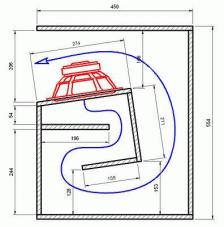 At the end of the last installment, I mentioned the Shahinian (in its commercial application) “Contra Bombarde“. This famous subwoofer was designed by Stewart Hegeman, built in limited quantity by Richard Shahinian, and named – not inappropriately, considering its response to at least 17Hz Hz – after either the deepest pipe on a pipe organ or a colossal ancient cannon. (Hence the term to “bombard” a target).
At the end of the last installment, I mentioned the Shahinian (in its commercial application) “Contra Bombarde“. This famous subwoofer was designed by Stewart Hegeman, built in limited quantity by Richard Shahinian, and named – not inappropriately, considering its response to at least 17Hz Hz – after either the deepest pipe on a pipe organ or a colossal ancient cannon. (Hence the term to “bombard” a target).
According to my friend, Skip Weshner, who was an acolyte and close friend of Stewart Hegeman, these woofers were flat to 17Hz, but still had substantial bass all the way down to 8Hz. As Skip explained their operation to me, they were a double transmission line running off two 8″ woofers mounted so that both were in the same chamber, set up so that the pressure waves from one side of both drivers would feed one transmission line and the waves from the other side of both drivers would feed the other, with sound coming only from the vents, and neither side of the drivers being directly exposed to the open air.
A crucial point of this design was, he told me , that the two TL ducts were of different lengths, tuned to be different fractions of the wavelengths of the “in chamber” resonant frequency of the two drivers (calculated as 1125′ [the “standard” speed of sound in air] ÷ Fs [the drivers’ fundamental resonant frequency as mounted] X “fraction 1” [for transmission line 1] and X “fraction 2” [for transmission line 2]) What this did, he said, was similar in effect to a “tuned port” bass reflex enclosure, in that the pressure waves at the vents (the port equivalents) were tuned to be in phase with – and thus to augment — each other, smoothing and extending the overall bass response. Where they were different is that they were not only of the same phase as each other and of the driving signal from the amplifier, but they were also the actual pressure waves produced by the drivers, instead of resonance-created constructs as they would have been from a bass-reflex enclosure.
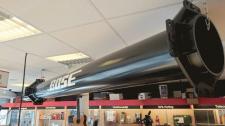 The result of all that was better sound for three main reasons: the drivers were better “loaded” and were coupled to the air with an optimum acoustical impedance to extend and smooth their bass response far below the “free-air” cone resonance of the drivers; the amount of driver cone travel required per unit of sonic output was significantly reduced; and the “full waveform” (360°)delay between the sound from the front of the diaphragms and the output from their rear (which is typical of all bass reflex enclosures) was eliminated for better bass transient response.
The result of all that was better sound for three main reasons: the drivers were better “loaded” and were coupled to the air with an optimum acoustical impedance to extend and smooth their bass response far below the “free-air” cone resonance of the drivers; the amount of driver cone travel required per unit of sonic output was significantly reduced; and the “full waveform” (360°)delay between the sound from the front of the diaphragms and the output from their rear (which is typical of all bass reflex enclosures) was eliminated for better bass transient response.
Good subwoofers? Certainly; but they were exceedingly complex and both difficult and expensive to build, with the result that, even despite their outstanding performance, rumor has it that less than 100 units (units, not pairs) may ever have been built.
That doesn’t mean, of course, that they were without influence on later designs. Bose, for example, (although I know of no direct connection), may have been influenced by the design of the Contra Bombarde in both its consumer and Pro speaker products.
One “Pro” product that immediately comes to mind regarding this is the Bose Acoustic Wave Cannon, of which, one audio writer said “The Cannon is precision engineered to minimize both air turbulence in the tube and flexing of the tube’s walls, and can provide high energy, very low end (20 to 60 Hz) sound smoothly and efficiently”. He goes on to say that “At 12 feet, the Cannon is far smaller than its traditionally designed counterparts. It is capable of delivering an acoustic punch equivalent in energy to that produced by a 250 square foot horn-loaded loudspeaker.”
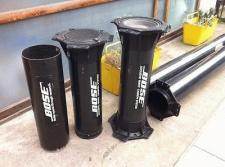 So, what is this audio “monsterpiece” that’s claimed to be able to produce 20 Hz to 125Hz +/- 3dB at 109dB-SPL? In fact, it’s pretty similar to a Contra-Bombarde, but done differently: Instead of using two 8″ drivers (for about 100 sq. in. of cone area) it uses just a single 12″ woofer (roughly 113 sq. in.) to move air. And, just like the two “8 inchers” of the Contra Bombarde the driver of the Wave Cannon is set up to face into two open-ended transmission lines, one for the sound off the front of the diaphragm and one for the sound off its back. One apparently large difference that proves, in reality, to be of little consequence from a functional standpoint is the fact that, instead of using very long “folded” wooden ducts for its transmission lines, the Wave Cannon uses large diameter straight pipes, which give it a total overall length, including both ducts and the mounting for the woofer, of 12 1/2 feet (150 inches). In either case, the duct lengths are chosen to be two different percentages of the free air cone resonance (“Fs”) of the driver(s), and the fact that the duct lengths of the Wave Cannon – even though it’s more than 12 feet (actually 3.81 meters) long – are still significantly shorter in the Wave Cannon than in the Contra Bombarde, may be due either to the different Fs figures for the respective drivers or simply that the Wave Cannon isn’t designed to go as deep as the Contra Bombarde.
So, what is this audio “monsterpiece” that’s claimed to be able to produce 20 Hz to 125Hz +/- 3dB at 109dB-SPL? In fact, it’s pretty similar to a Contra-Bombarde, but done differently: Instead of using two 8″ drivers (for about 100 sq. in. of cone area) it uses just a single 12″ woofer (roughly 113 sq. in.) to move air. And, just like the two “8 inchers” of the Contra Bombarde the driver of the Wave Cannon is set up to face into two open-ended transmission lines, one for the sound off the front of the diaphragm and one for the sound off its back. One apparently large difference that proves, in reality, to be of little consequence from a functional standpoint is the fact that, instead of using very long “folded” wooden ducts for its transmission lines, the Wave Cannon uses large diameter straight pipes, which give it a total overall length, including both ducts and the mounting for the woofer, of 12 1/2 feet (150 inches). In either case, the duct lengths are chosen to be two different percentages of the free air cone resonance (“Fs”) of the driver(s), and the fact that the duct lengths of the Wave Cannon – even though it’s more than 12 feet (actually 3.81 meters) long – are still significantly shorter in the Wave Cannon than in the Contra Bombarde, may be due either to the different Fs figures for the respective drivers or simply that the Wave Cannon isn’t designed to go as deep as the Contra Bombarde.
Bose also adopted a similar system of two differently tuned TLs for its (consumer market) “Acoustimass” speakers and “Wave” radios which, whatever else one might say about them, do make surprising bass for their size and price points.
I’ll have more on how to make better bass for you next time, and will be starting on an entirely different kind of approach to building speaker enclosures for that purpose.
I hope you’ll be with us then!
